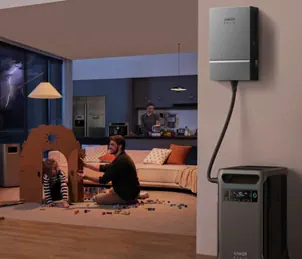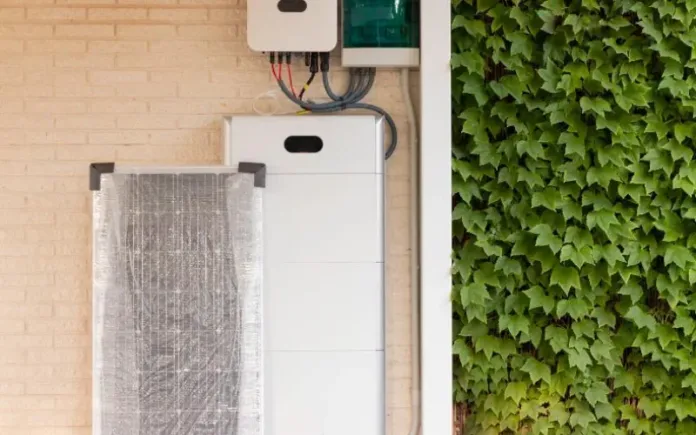A battery backup system is a crucial investment that provides energy security during power outages and high-demand periods. It ensures that essential appliances, medical devices, and electronics continue to operate when the grid goes down. But like any sophisticated equipment, it requires proper maintenance to ensure long-lasting performance. Without regular care, you risk system inefficiency, reduced battery life, and costly repairs. Whether you’re using your battery backup for emergencies or as part of a renewable energy setup, maintaining it is key to maximizing its reliability and lifespan.

Step 1: Regularly Inspect Battery Connections and Cables
One of the first steps in maintaining your battery backup system is to inspect all connections and cables. Over time, these components can loosen or develop corrosion, leading to inefficiencies in power transfer or even total system failure. It’s essential to regularly check for signs of wear or damage, ensuring that everything is tightly secured and functioning as expected. If you notice corrosion on the battery terminals, it’s important to address it immediately. To clean the terminals, mix a small amount of baking soda with water to create a cleaning paste. Using a soft brush, gently scrub the corroded area until clean. After cleaning, it’s a good idea to apply a protective anti-corrosion spray to the terminals. This not only prevents further damage but also enhances the efficiency of power flow, ensuring the longevity of your system.
Step 2: Monitor Battery Charge Levels and Health
Most modern battery backup systems come with built-in displays or apps that allow you to monitor key parameters like battery charge levels and overall health. These tools help you keep track of your system’s performance and ensure that the battery operates within the optimal range. Avoid allowing the battery to completely drain, as deep discharges can significantly reduce its lifespan. Similarly, frequent overcharging can cause damage to the battery cells, impacting its long-term efficiency. By keeping an eye on charge levels and adhering to manufacturer guidelines, you can ensure your system performs optimally and lasts longer.
Step 3: Perform Regular Capacity Testing
Another essential maintenance practice is to perform regular capacity tests to ensure your battery backup system is operating at its rated capacity. Every few months, simulate a power outage by disconnecting from the grid and running key appliances. This test will give you a good indication of how much power your system can deliver and how long it can keep your home running during an actual emergency. Regular testing not only verifies that the battery holds a charge as expected but also helps you identify any potential issues before they become critical. Should your system show signs of capacity decline, it may be time to consider an upgrade or a professional checkup.

Step 4: Keep the System in a Stable Environment
Batteries are particularly sensitive to temperature extremes, and maintaining your backup system in a stable environment is essential for its longevity. High heat can accelerate the degradation of battery cells, reducing overall efficiency and shortening the system’s life. Conversely, cold temperatures can decrease the battery’s capacity and performance. To prevent these issues, it’s best to install your battery backup system in a cool, dry, and well-ventilated location. Ideal spots include basements, utility rooms, or insulated garages—places that are not prone to significant temperature fluctuations or moisture. By choosing the right environment, you help ensure your system remains efficient and operational for years to come.
Step 5: Update System Software and Firmware
In the digital age, many battery backup systems come with smart technology that allows for software or firmware updates. These updates are critical for improving system performance, fixing potential bugs, or enhancing compatibility with other technologies, such as solar energy setups. If your system connects to an app or online portal, check for updates regularly. Installing the latest software ensures that your system remains optimized, offering better energy management and integration with smart devices in your home. Updates can also improve the efficiency of the inverter, ensuring that the system converts stored power with minimal energy loss.
Step 6: Schedule Professional Maintenance Annually
While regular DIY maintenance is important, scheduling a professional inspection once a year is essential for the overall health of your battery backup system. A qualified technician can assess the health of your battery, check for wear on the inverter and charge controller, and ensure that the system is functioning as efficiently as possible. Professionals can also provide recommendations on upgrades or repairs that may be necessary to maintain optimal performance. This annual checkup ensures that your system is ready to handle extended outages or high-demand periods when you need it most.
Conclusion
Proper maintenance of your battery backup system is essential for optimal performance during outages. Regular inspections, monitoring charge levels, conducting capacity tests, and maintaining a stable environment enhance its longevity and reliability. Keeping software updated and scheduling annual professional maintenance further minimizes breakdown risks. For a dependable home backup solution, consider the Anker SOLIX F3800, which offers an expandable capacity of up to 26.9kWh and a 6,000W output. Its smart monitoring feature lets you track energy usage via an app, ensuring you’re always informed. By following these maintenance tips and investing in the Anker SOLIX F3800, you can ensure your home stays powered and secure.
